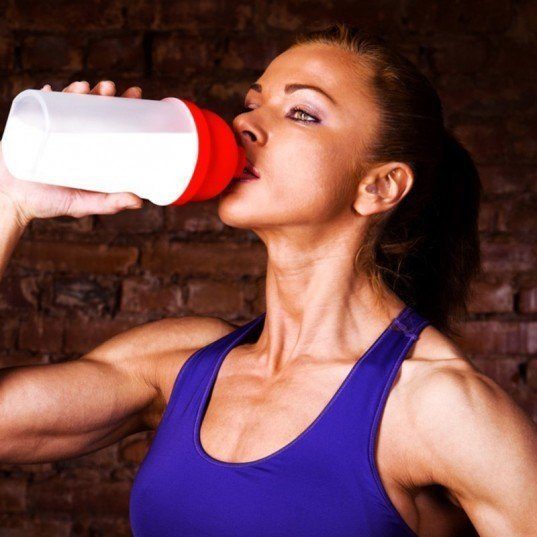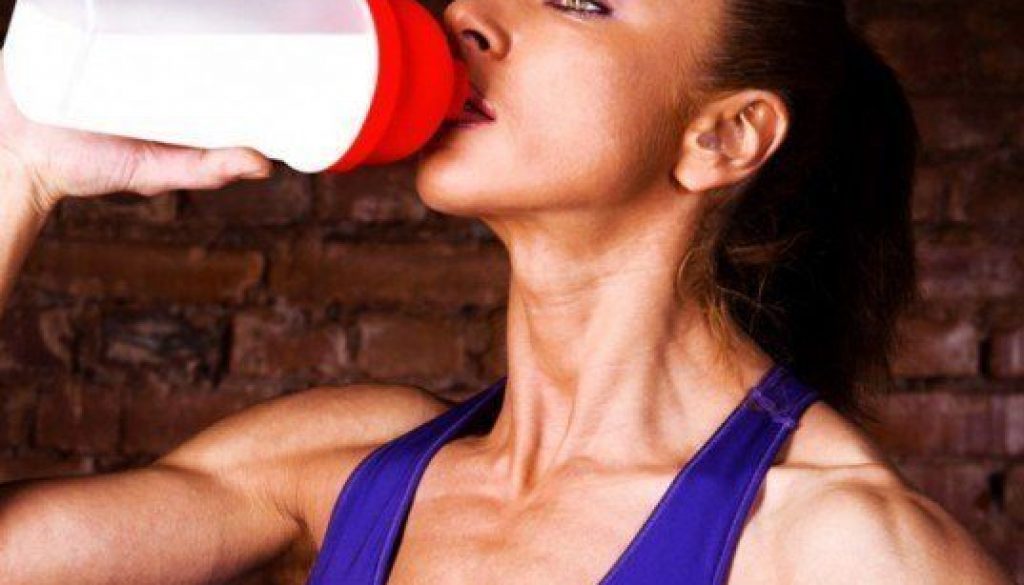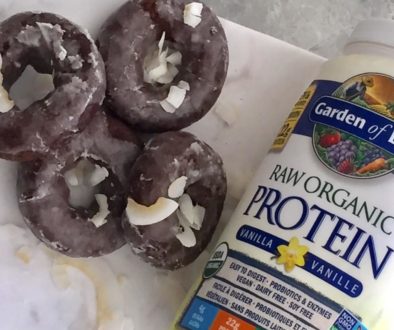Go Bananas! Protein Shake
Since the low-carb craze of the late 90s, the weight-loss pendulum has swung more in favour of calorie counting and stricter diets such as gluten-free, vegan, and raw.
Although this way of eating is effective for weight-loss, they can be severely lacking in the ever-important protein. And this is a big problem.
Protein is undeniably linked to success in weight-loss. In fact, the moment it leaves your fork, protein goes to work slimming your waistline. High-protein foods take more work to digest, metabolize, and use, which means you burn more calories processing them. They also take longer to leave your stomach, so you feel full sooner and for a longer amount of time. Furthermore, in one study dieters who increased their protein intake to 30 percent of their daily caloric intake ate nearly 450 fewer calories a day and lost about 11 pounds over the 12-week period without employing any other dietary measures.
 So it’s no wonder that protein shakes are becoming an increasingly popular meal choice among those trying to lose those unwanted pounds. Protein powder for shakes is readily available, affordable, and come in a variety of tasty flavours. Shakes are also quick to prepare and easy to take on the go. Plus, you can easily sneak in some of your less than favourite leafy green friends without your taste buds knowing!
So it’s no wonder that protein shakes are becoming an increasingly popular meal choice among those trying to lose those unwanted pounds. Protein powder for shakes is readily available, affordable, and come in a variety of tasty flavours. Shakes are also quick to prepare and easy to take on the go. Plus, you can easily sneak in some of your less than favourite leafy green friends without your taste buds knowing!
So should you be ditching your fruits and veggies in favour of a cold, frothy protein shake? Well, not exactly. Ideally, you should consume 0.36 grams of protein for every pound of body weight, according to recommended daily allowances (RDA) set by the Food and Nutrition Board. So if you weigh 170 pounds, you need about 61 grams of protein each day. But the key to weight-loss is still a calorie deficit – that is, consuming fewer calories than you are burning. Therefore you must keep your fitness goals in mind when coming up with your delicious protein shake recipes so you understand how to create the perfect mix for you! Here are some quick guidelines to help:
You want to gain weight – if you are trying to gain muscle and increase weight (for example, if you are a professional bodybuilder) than you’d want to increase your protein intake and your caloric intake in tandem, or at least increase protein without worrying about adding more calories into your diet. However, a diet in which protein makes up more than 30{f8b3c30a7d782a2db2561023856fa35f4413de809882d9e5eb69c8ab5d10c4a9} of your caloric intake causes a buildup of toxic ketones. So-called ketogenic diets can thrust your kidneys into overdrive in order to flush these ketones from your body. As your kidneys rid your body of these toxic ketones, you can lose a significant amount of water, which puts you at risk of dehydration, particularly if you exercise heavily. So make sure you are still sticking within the recommended daily allowances.
You want to maintain your current weight, but change your current physique – if weight-loss isn’t your goal, but instead just general toning and re-shaping of your body, then increasing your protein intake is an excellent way to achieve your goals. This is because leucine, an important branch chain amino acid found in complete proteins, has a direct signaling effect on muscle that prevents muscle-loss during weight-loss. This means that on a high protein diet, the weight that is lost is mostly fat, not muscle, so you can build and sculpt the muscular physique you want! But make sure you are not increasing your caloric intake with the addition of more protein. In order to maintain your weight you must take calories from elsewhere in your diet to counteract the increase in calories from protein.
You want to lost weight – if your ultimate goal is to lose weight, then your mission is clear: you must eat fewer calories than you burn. Protein calories, fat calories, complex carb calories – it all has to add up to less! To calculate how many calories you are getting from protein (and therefore, make sure you are on track with your decreased calorie allowance), simply multiply the number of grams of protein you need per day by 4. Since there are 4 calories in one gram of protein, this will give you the number of calories that are required to get the protein you need to reap its weight-loss benefits. Then you have to factor in the calories in the rest of your shake’s ingredients. Myfitnesspal is a great app you can download that lets you look up the calorie content of many common foods, and it even doubles as a food diary so you can track your meals and stick to your weight-loss plan!
Sticking with these general guidelines will not only help you harnass the power of protein, but also help you stay on track to successfully reach your fitness goals. Need a little tasty inspiration? Here is a delicious smoothie recipe to help you get shakin’!
Go Bananas Protein Shake
Holy protein, Batman! Between the almond milk, the nut butter, the chia seeds, and the protein powder, this deliciously frothy smoothie will rev your metabolism and keep you full for hours! Go nuts; go bananas; go blend one now!
1 cup unsweetened almond milk
1 Tbsp. all natural nut butter
1 Tbsp. chia seeds, ground
½ teaspoon cinnamon
½ of a vanilla bean (can substitute pure vanilla extract if unavailable)
1 scoop vanilla protein powder (preferably chemical- and sugar-free)
1 frozen banana
Combine all ingredients in your blender and blend until smooth. Pour and enjoy!



